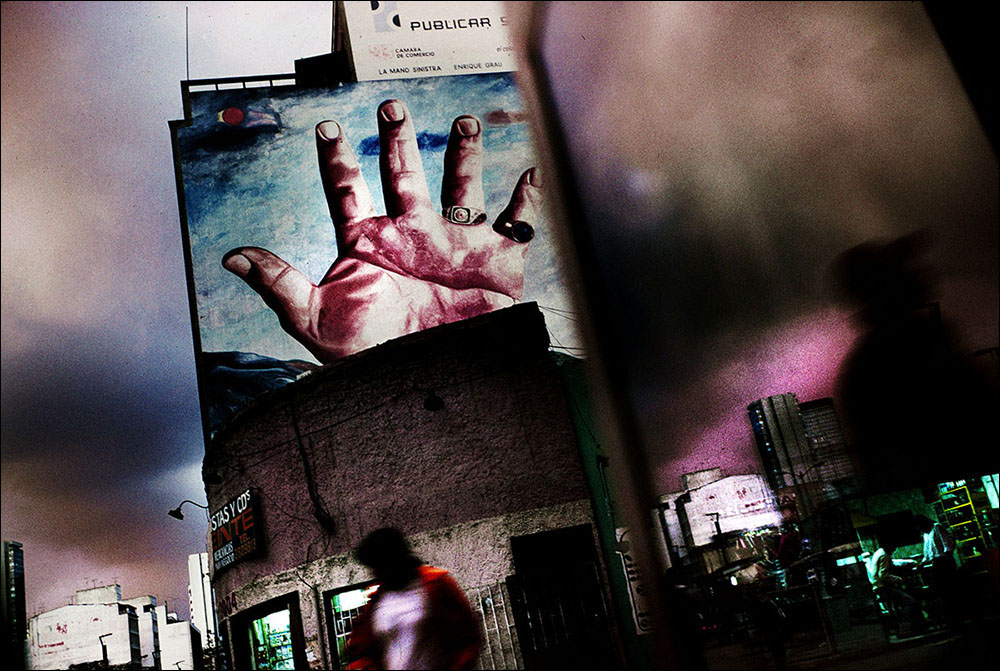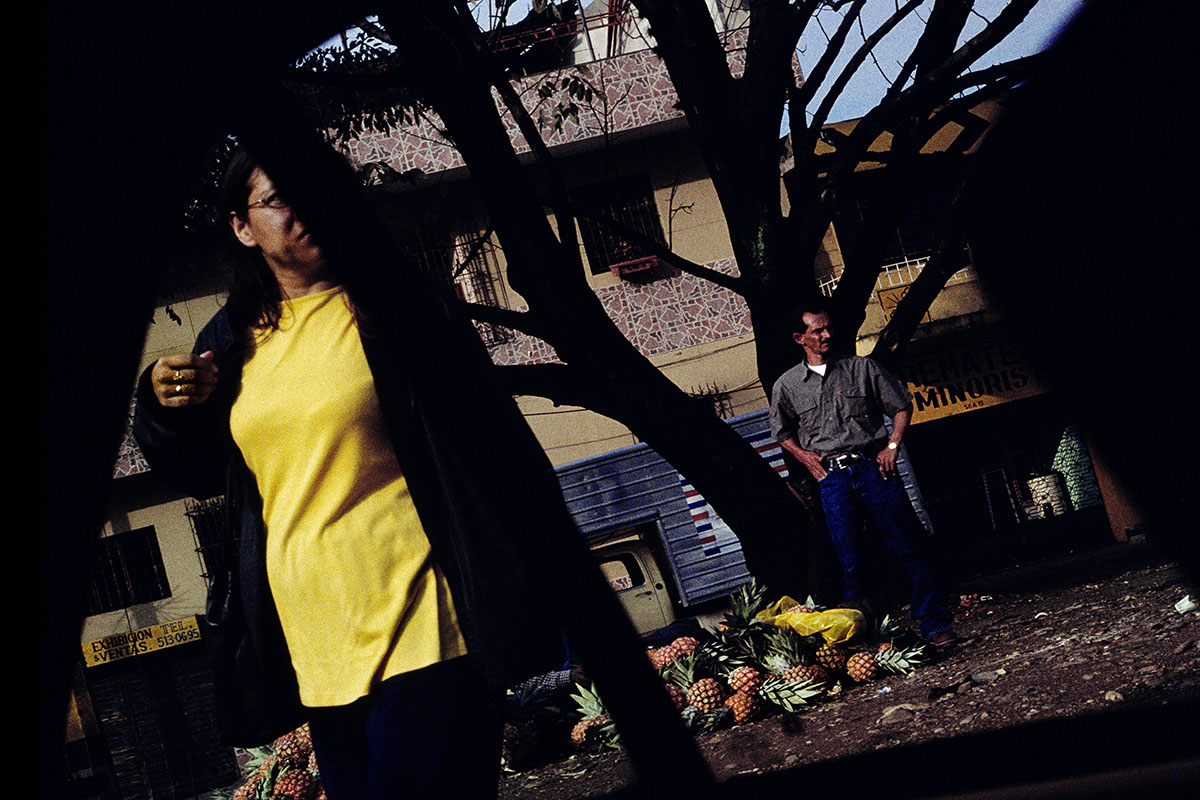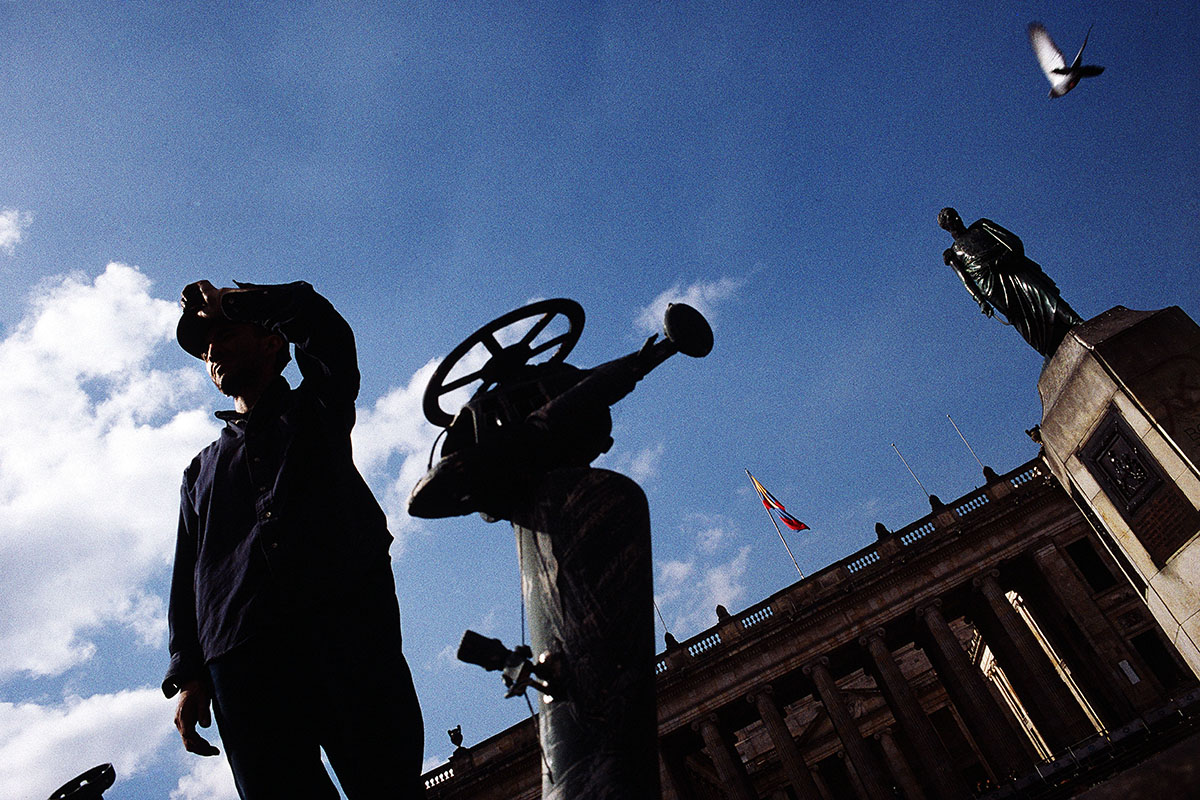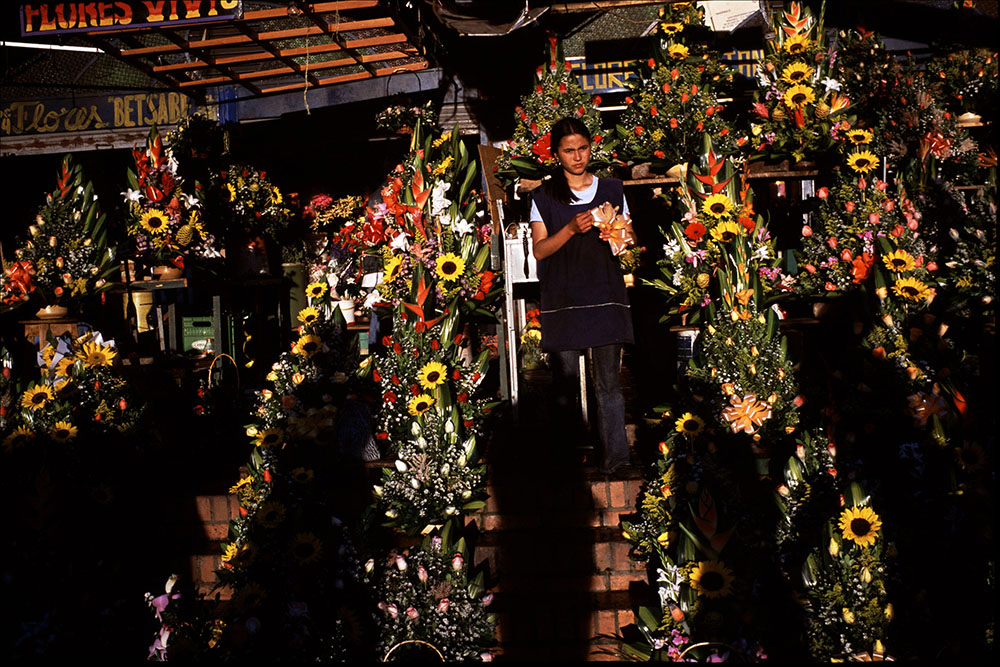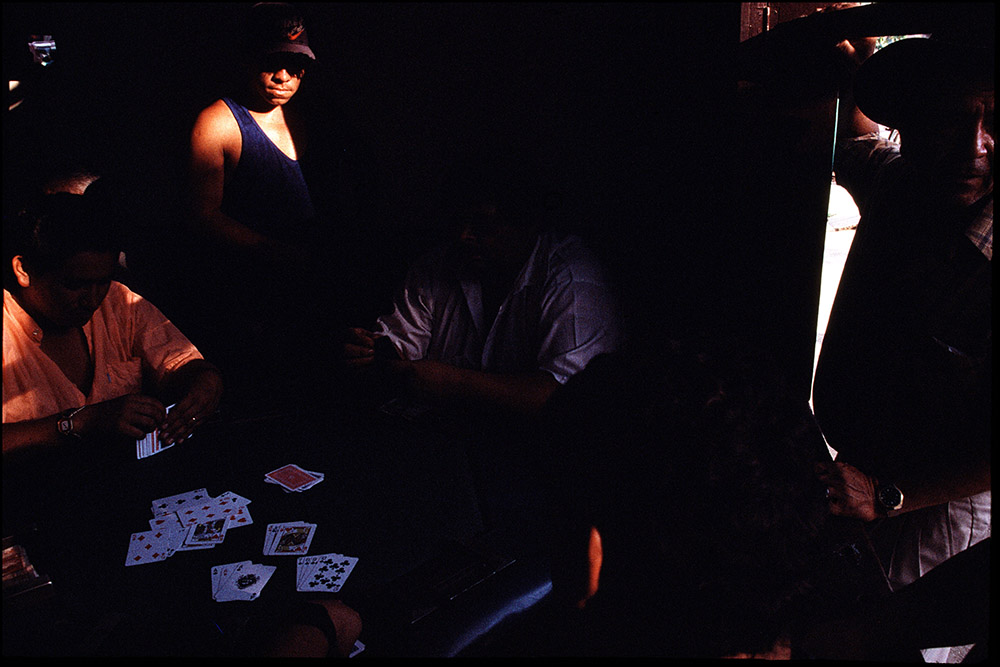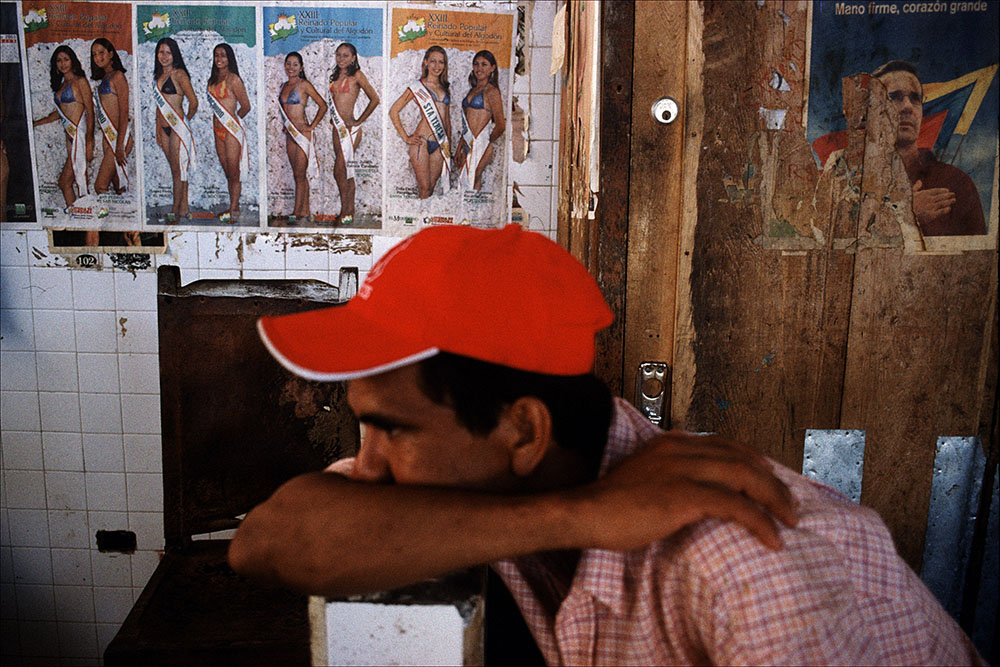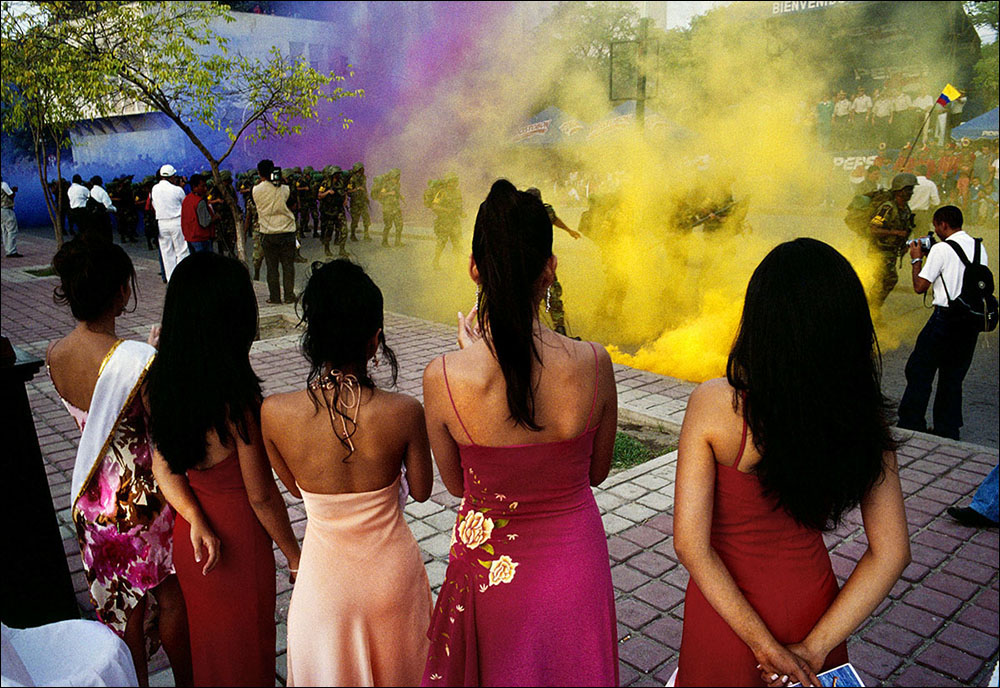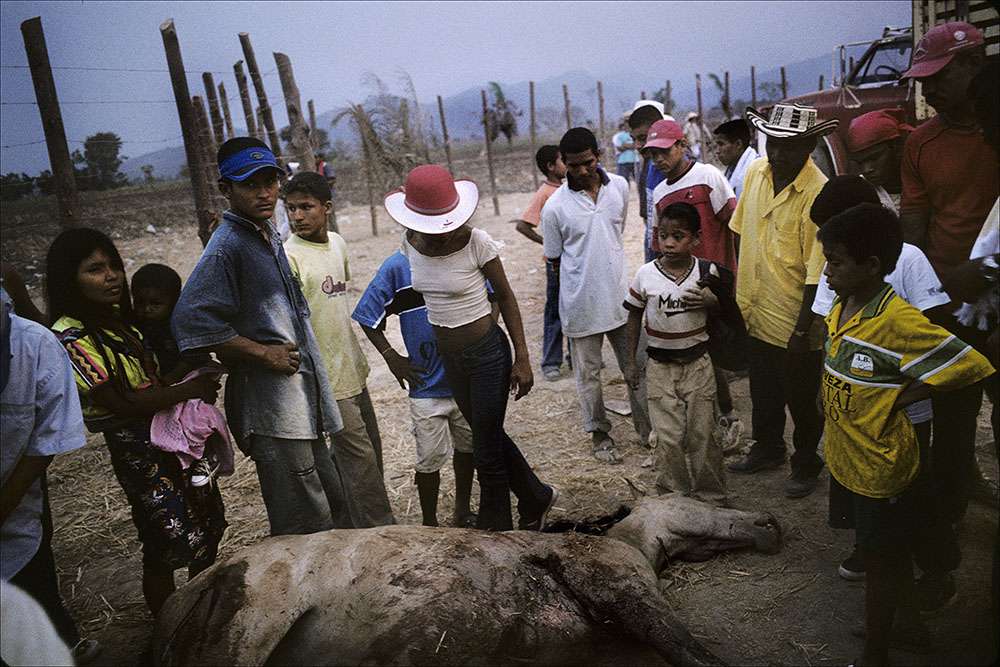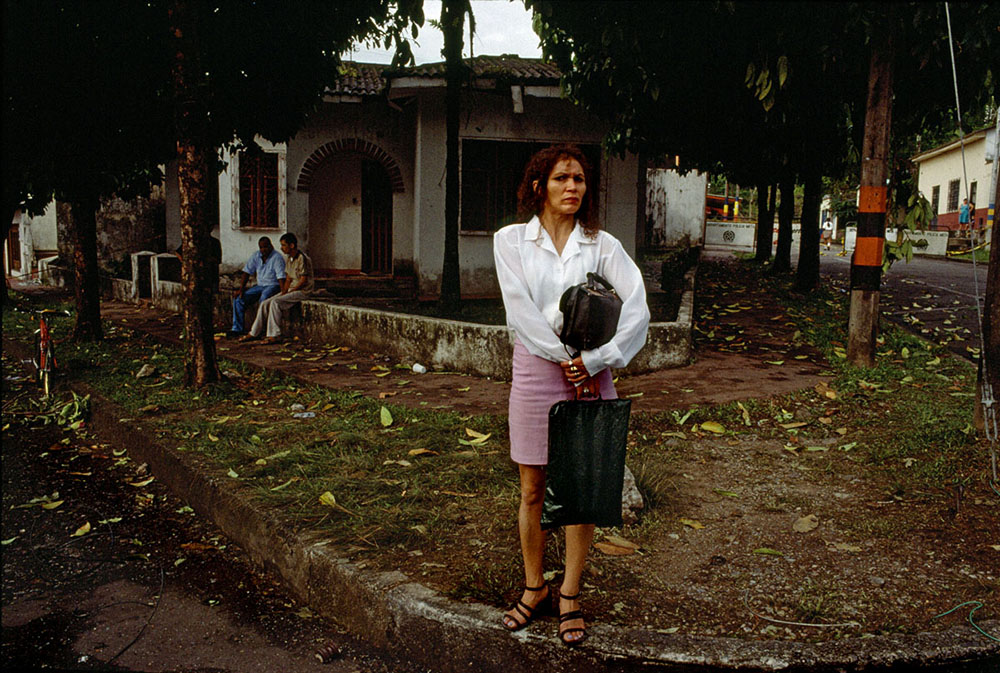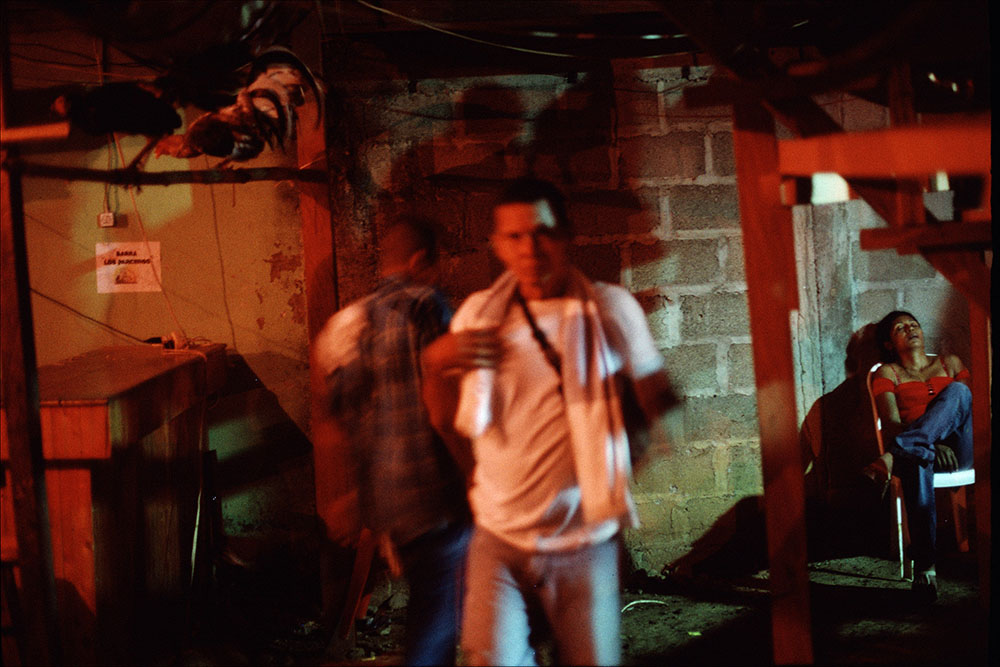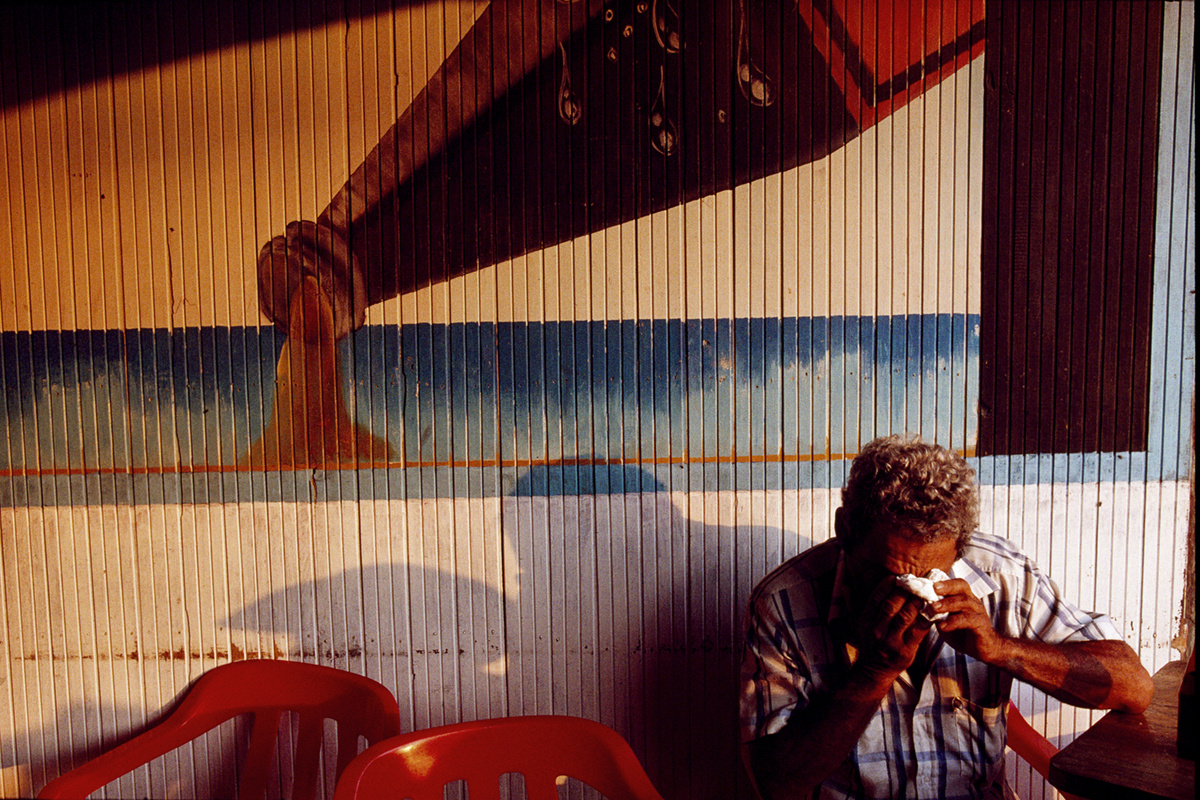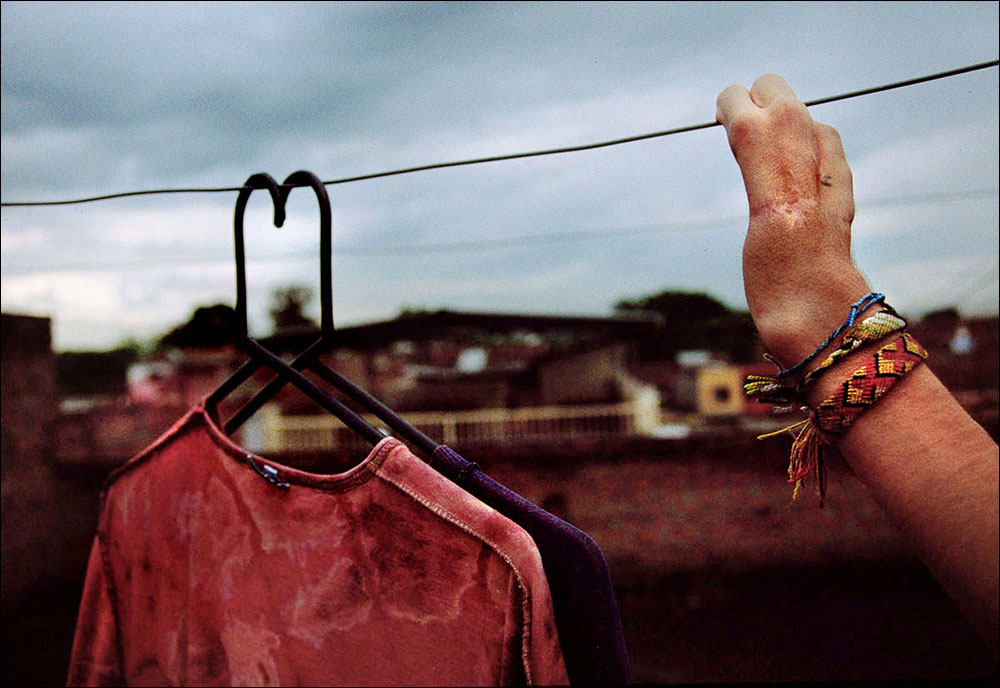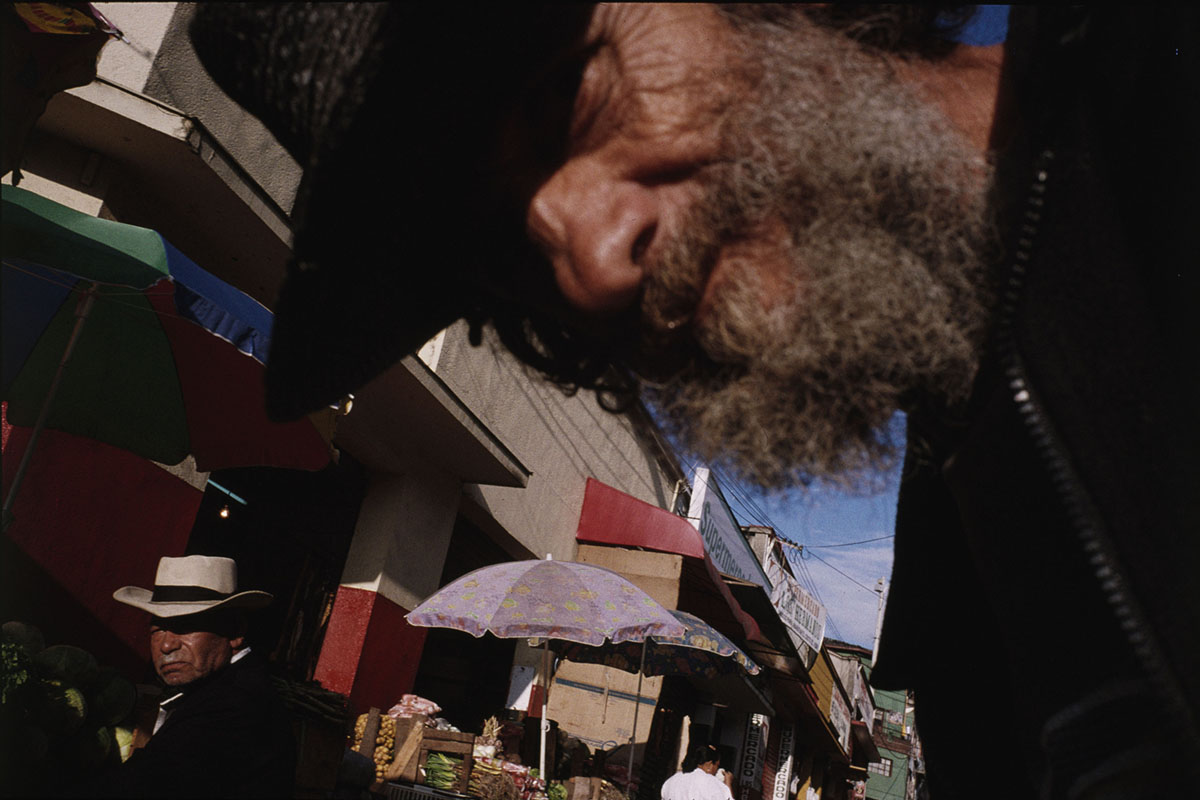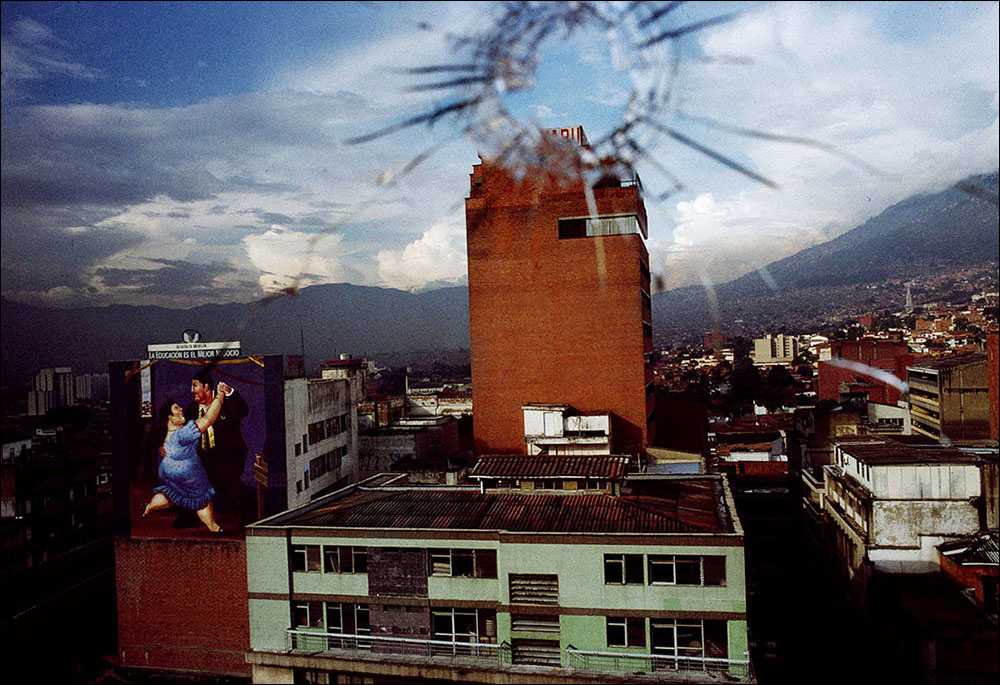The title to this series of images refers to La mano siniestra, a 1983 painting by the Colombian artist Enrique Grau). One day while photographing on a sketchy corner of 10th ave and 19th street in the center of Bogotá, I looked up to see a massive mural reproducing Grau’s disconcerting image of a beringed hand with its fingers on backwards. The painting, quite unlike anything else in Grau’s work, seems to speak to a powerful force, with mafia connotations, that rules over the Colombian countryside. I understood that moment, composed of an anxious, violent atmosphere on the ground around me and a strangely malevolent symbol in the air above, as representative of the mood of the country.
At the time, I was seeking a visual vocabulary to represent the mystery of the Colombia’s internal armed conflict, a war seemingly without end that was both everywhere and nowhere; an enigmatic atmosphere of violence and wariness; a sense that invisible powers (corrupt elites, shadowy mafias, clandestine armed groups) were above the fray but in control.
These images, a few of which introduce the book Violentology: A Manual of the Colombian Conflict (Umbrage, 2012) seek to evoke an atmosphere, rather than to provide specific answers to the question of why Colombia, over the course of her history, has returned time and again to a state of internal conflict.

